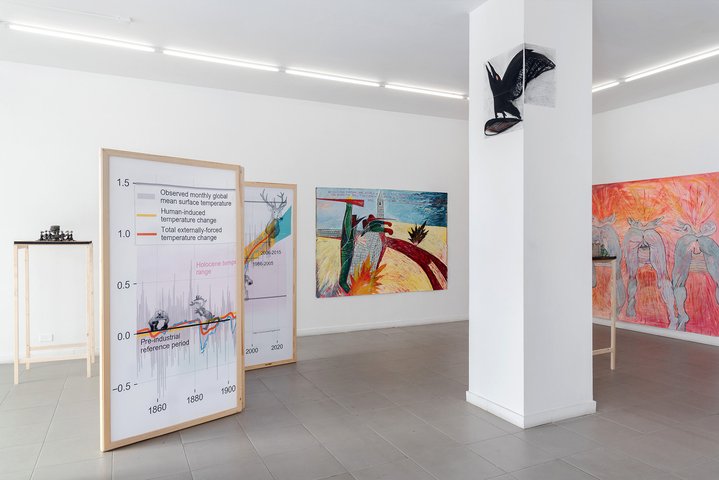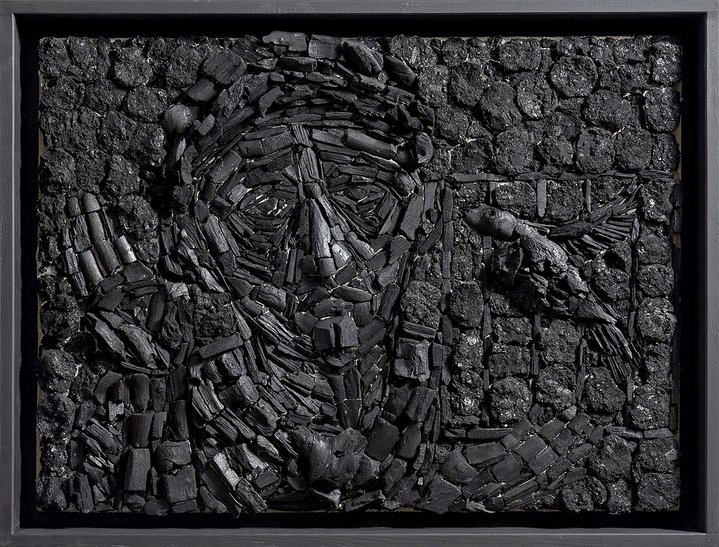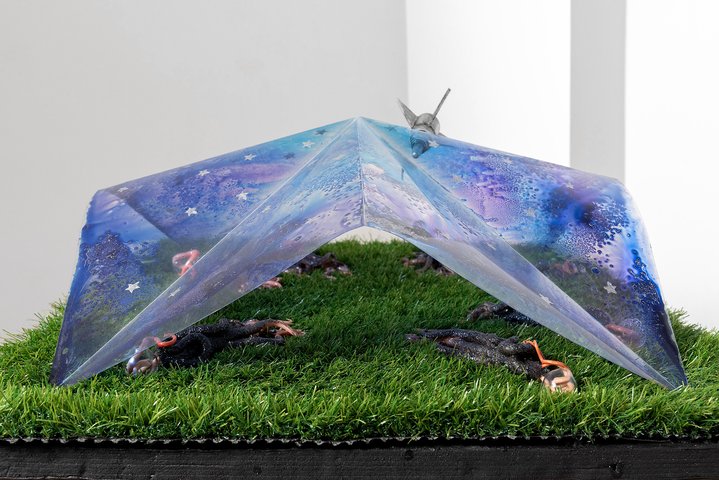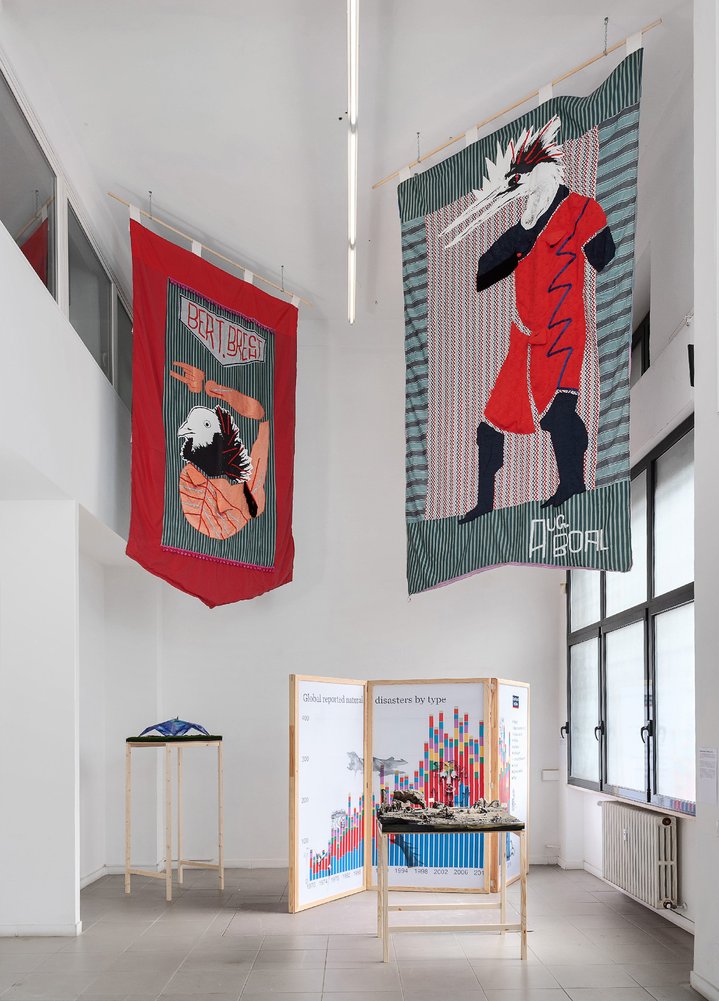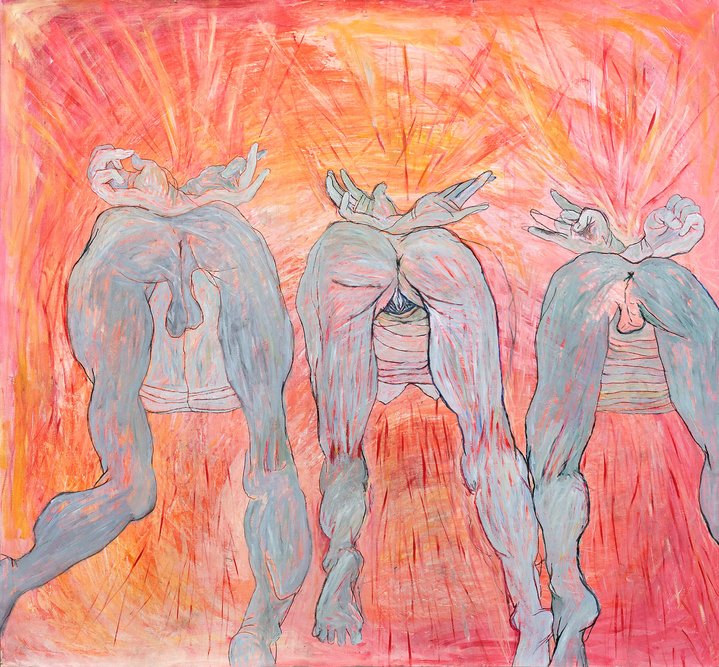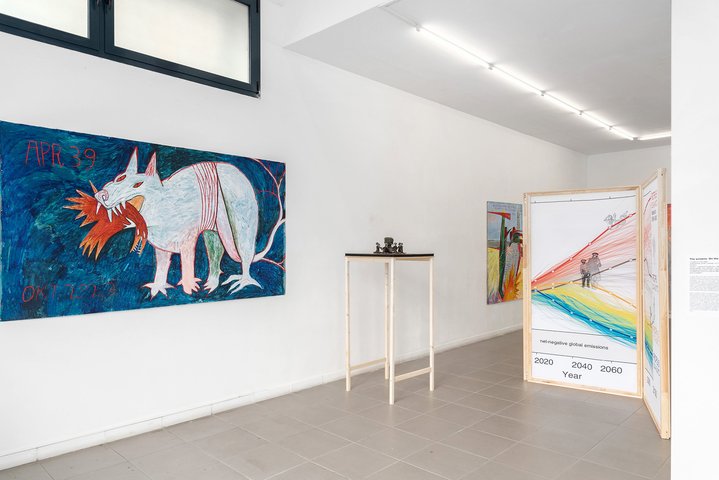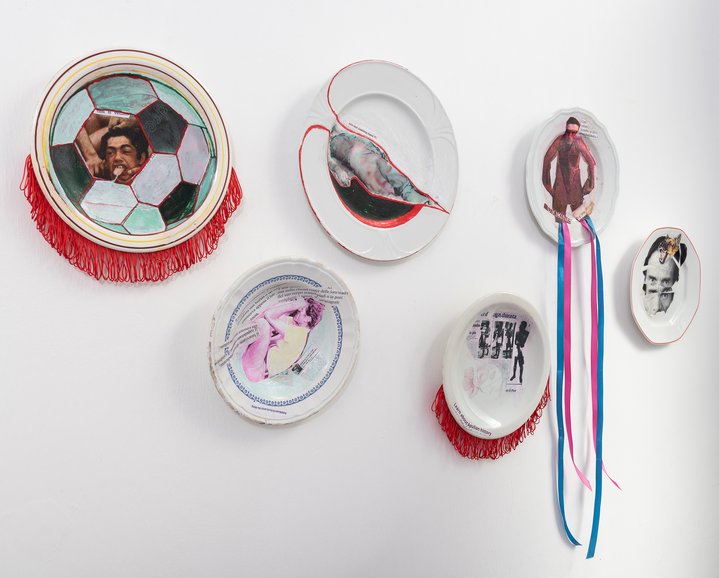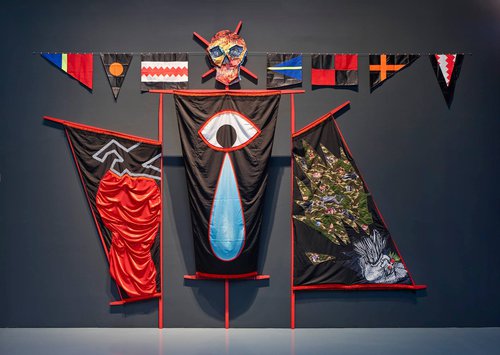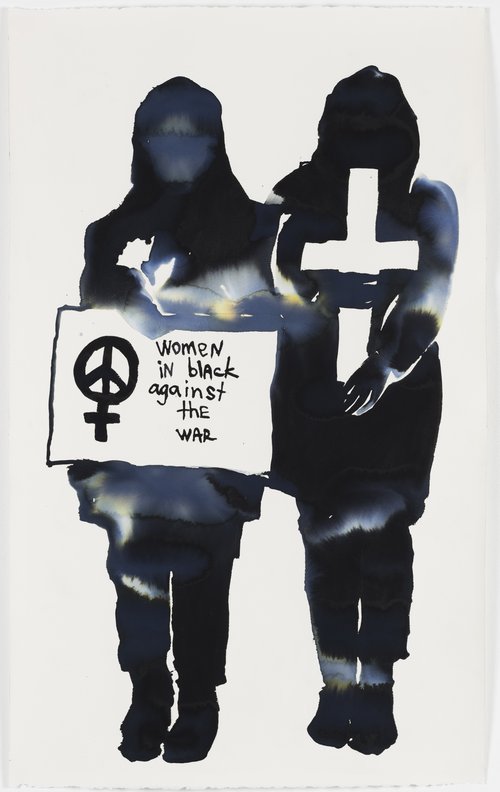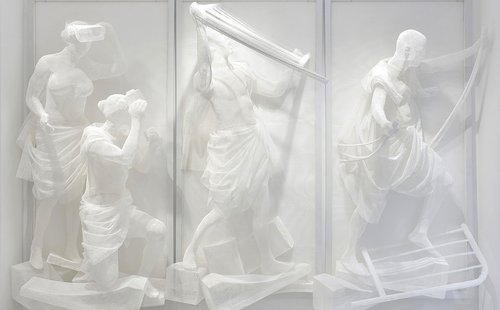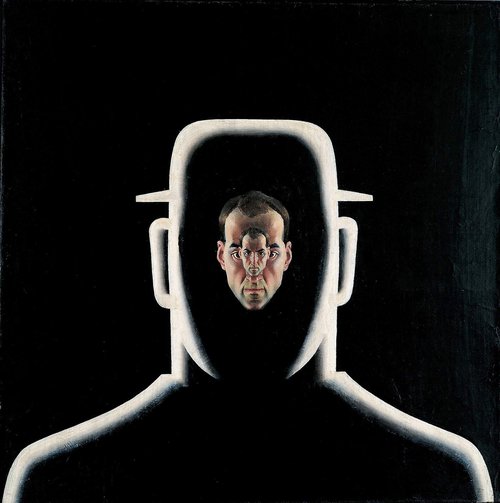Fight or Flight, Chto Delat? Celebrates its 20th Anniversary in Rome
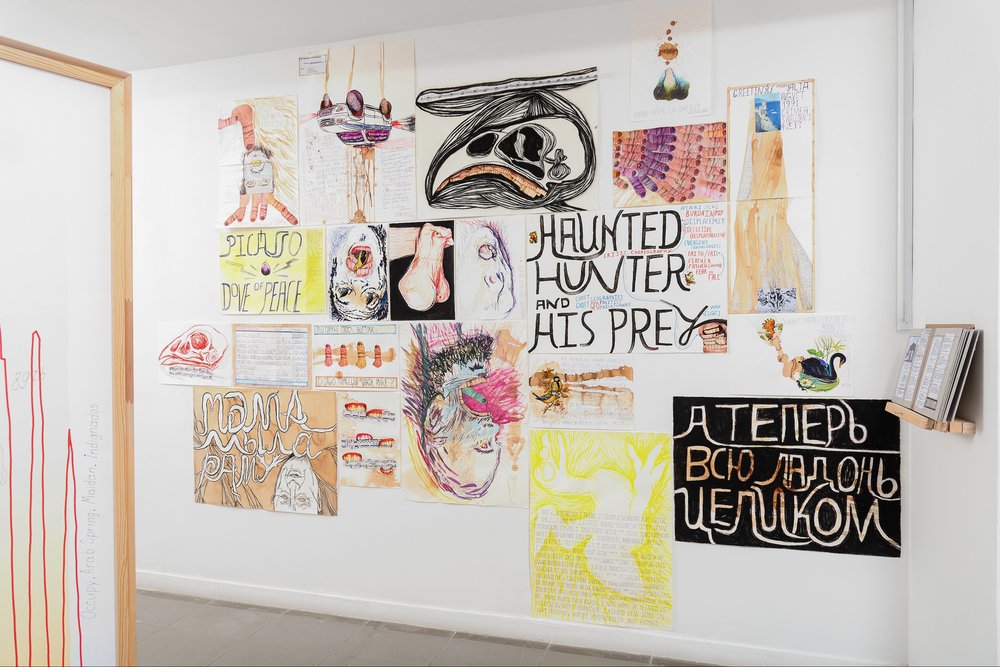
Chto Delat. Untitled (from the series: Il Catalogo degli Uccelli), 2022- on going. Photo by Eleonora Cerri Pecorella. Courtesy of The Gallery Apart Roma
As it enters its third decade, an exhibition ‘Bird Works (2018–2024)’ by the Russian collective ‘Chto Delat?’ is a compelling reflection of recent catastrophic events.
Chto Delat? (Eng. What Is To Be Done?), a contemporary art collective, in whose multilayered work political theory, art and activism merge, is celebrating its 20th birthday with an exhibition at Gallery Apart in Rome. The exhibition also marks a decade since it founded the School of Engaged Art – now morphing into a School of Emergencies.
To anyone familiar with collective processes that transcend the political, aesthetic and multigenerational, this is no small achievement. However, the show is less celebration, more a dark reflection of our troubled times by one of the most internationally appreciated and representative art groups to emerge in the post-Soviet era. A sense of despair overshadows the collective’s ironic commentary where hope has always remained a possibility. This reflects a changed perspective of the group’s members - artists, educators, philosophers, poets, a choreographer, and film director, all originally from Russia and all currently in exile.
‘Bird Works’ is openly autobiographical, a witness to the outbreak of the pandemic, worldwide escalation of wars, violence, and repression, as well as worsening climate disasters. Chto Delat? has always addressed social issues, but their engagement has become personal and emotional as well as political. We see members of the group as protagonists in their own films, sharing their individual stories with broken voices, naked bodies, their fears and tears.
In ‘Canary Archive’ a film shot in 2022 at the onset of the military mobilization in Ukraine the nine members of the collective share their dreams and nightmares with the images and sounds of caged canaries and a lift rhythmically descending the mine shaft filling a three-panelled screen. A canary used to warn miners when carbon monoxide levels rose to dangerous levels and here it is as if the artists assume the role of signaling the danger to society in a work that is also reflective of the West’s anthropocentric relationship with the world.
The film is complemented by an installation of mosaics inspired by pictures of miners posing with canaries, created using pieces of coal. Its physical materiality enables us to trace the natural processes of decay and regeneration of land, while simultaneously contemplating the human struggle for survival in an overly exploitative, extractive economy.
Chto Delat? Member Ada Abdrushevich created the series ‘Education Which Lost Home’ (2023) in the historical style of socialist realism. On the upper floor of the gallery are displayed sculptural maquettes of the destroyed, abandoned architecture of once familiar places, now in ruins, re-wilded by nature and inhabited by strange creatures. One of these pieces, set on a pedestal made from a salvaged fragment of flooring from Rosa’s House of Culture, Chto Delat’s social centre in St. Petersburg, is a reminder that an entire community has lost its place.
A sense of impossibility, impermanence, loss, and grief dominates the exhibition, with its mix of dystopian present-future, where classrooms are bombed and the assassination of Pasolini is served on broken plates in Nikolay Oleynikov’s ‘Piatti Pronti Per Pasolini’, originally conceived as an action to collect food donations for people in need. Today, it is difficult not to associate these works with the images coming from Gaza and the debate around Alexei Navalny’s death.
Stuttering, self-referential and purposely repetitive, using images and stories, reflections and obsessions, newsfeeds and nightmares, Oleynikov delivers an almost ornamental panoramic frieze on how a catastrophe can distort, transform, and/or displace cultural codes, relations and life trajectories. Borrowing its title from avant-garde composer Olivier Messiaen, in his series ‘Il Catalogo degli Uccelli’, the artist weaves together various cultural and ornithological references -- from punk to Pasolini; from Wagner the German composer to Wagner the Russian mercenary organization; from Stravinsky to Francis Ford Coppola. According to Oleynikov, the series contains everything that “he absorbed as a child in the late Soviet era: unapologetic internationalism, a craving for peace, a fear of atomic war, a fear of any war, and everything he learned”. Documented in a punkish workbook that guides the visitor into his dense, striking visual work, Oleynikov transforms the space into a meditation on the abyss of war and the struggle to resist. It is an almost physical, painful effort to reconstitute a fragmented memory, a sense of home, or a search for truth
The painting ‘For Whom The Bell Tolls’, also by Oleynikov, is a feverish reorganisation of his identity, with traces of his childhood family trips to Crimea and endless references to other artists, cinematographers and composers working in times of war. His ‘Helicopters (Valkirie)’ is another self-portrait with wings, a reference to Leon Golub’s emaciated victims of war crimes or police violence. ‘1939 Picasso’ is a quote from the original ‘Cat Catching a Bird’ created by Pablo Picasso at the beginning of the Second World War. Almost a triptych, these paintings are accompanied by a paper-mache sculpture showing a heart inevitably growing teeth.
A didactic orientation in our historical moment, ‘The Screens. On the margins’ (2020), is a set of large room dividers with infographics about climate change, human-provoked or natural disasters, CO2 emissions, seismic activities, terrorist attacks, death tolls, sunspots and rising sea levels. Ghostly critters, biblical figures, videogame characters, and war chronicles appear among the data as glitches, perhaps hacking the possibility of a scientific analysis or a technological solution, all overseen by Benjaminian-Klee’s Angel of History, a recurrent figure in Chto Delat’s reflections. ‘The Screens’ are mirrored by those appearing in the video ‘Inside Diagrams’ (2023) – in which the bodies of Chto Delat’s members are superimposed onto the same graphs. The scattered positions they assume suggest imbalance, turbulence, and precariousness. We see oil pipelines become arteries on their flesh, flood levels enter their mouths, mapping that interconnects bodies and territories, the human and more-than-human interdependence, and the fragile equilibrium that keeps life in balance and communities together.
With the collective now geographically scattered, the exhibition speaks of conditions of dislocation, displacement, mourning and the struggle to start over again. ‘Strange Birds of Pedion’ (2018), large, suspended textile works, complete the immersive installation gesturing towards Aristophanes’s ‘Birds’ and Bertolt Brecht and Augusto Boal’s legacy of resisting repression through political art.
Although usually a symbol of love, freedom, and peace, flying over territories with no borders, migrating sans papiers, delighting us with their beautiful plumage and musical chirping, the birds in Chto Delat’s ‘Bird Works’ seem to announce endless menaces and apocalyptic threats.
We leave the exhibition with a sense of foreboding, wondering whether we will ever find the exit to the mineshaft.






